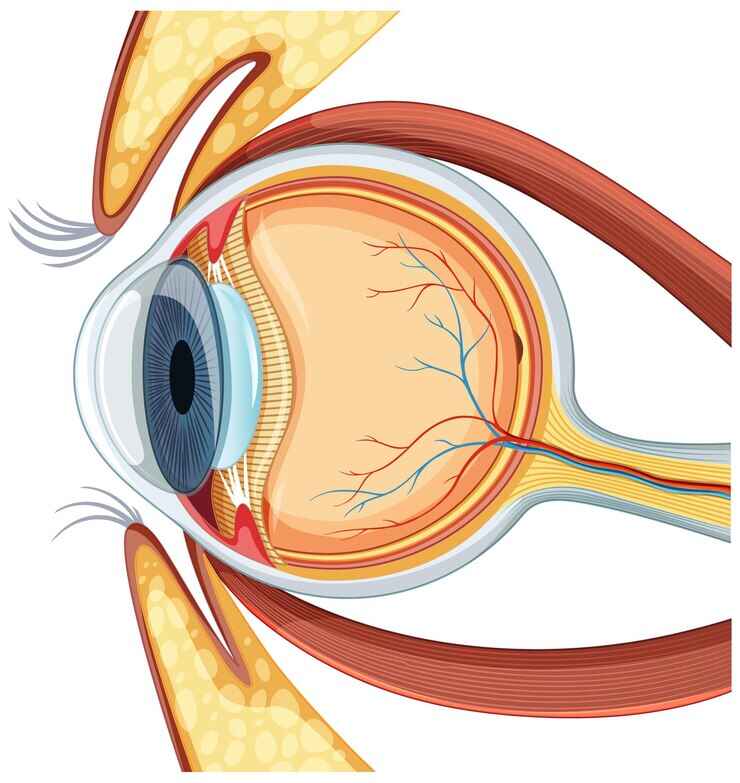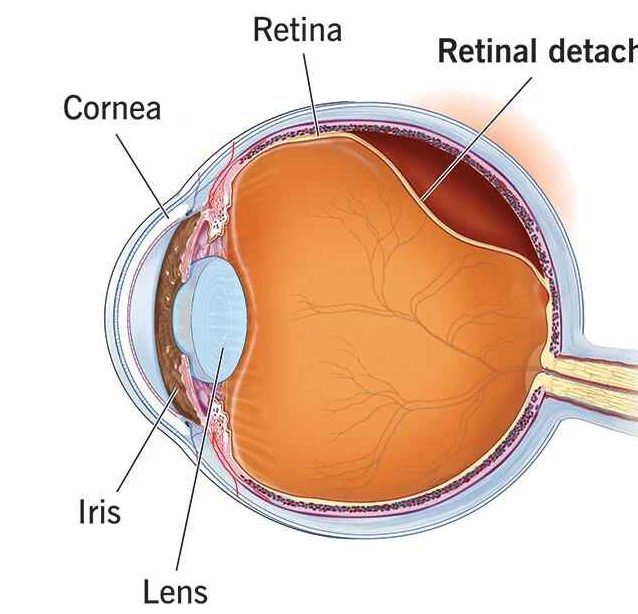As we age gracefully, our eyes, the windows to the world, need more care and attention. Women, in particular, face a higher risk of various eye conditions that lead to vision loss. However, the good news is that with the right measures, vision loss is not inevitable. In this article, we dive into important information from Dr. Michael Lin, an ophthalmologist at Massachusetts Eye and Ear, to guide you on your journey to better eye health.
Common Eye Conditions for Women

Posterior Vitreous Detachment
One of the most common concerns in the 50s and 60s is posterior vitreous detachment. Dr. Lin explained that this phenomenon can appear as lightning, dots of light, or a web-like fog in the vision. Immediate attention is important, as the vitreous can sometimes take too much pressure on the eyeball so that it tears or breaks, causing loss of vision.
Cataract
Cataracts, a natural part of aging, occur when the clear lens of the eye becomes cloudy. This can make the world dark. While treatment is generally ineffective, advances in cataract surgery offer a faster way to replace the cloudy lens with clear, restored vision.

Glaucoma
Cataracts, a natural part of aging, occur when the clear lens of the eye becomes cloudy. This can make the world dark. While treatment is generally ineffective, advances in cataract surgery offer a faster way to replace the cloudy lens with clear, restored vision.

Age-Related Macular Degeneration (AMD)
AMD, retinal degeneration, can lead to loss of central vision. A routine eye exam can detect AMD, and treatments vary from special vitamins to drug injections, depending on the type.
Diabetic Retinopathy
Poor blood sugar control and high blood pressure can lead to diabetic retinopathy, causing various issues in the retina. Management measures include controlling blood sugar and blood pressure, with possible laser treatments or injections.
Dry Eyes
The lubricating film of tears can become less effective over time, irritating. First aid can be found in over-the-counter artificial tears, but persistent symptoms warrant a visit to an eye specialist.
Potential Eye Changes with Aging
Dokta Lin ya jaddada cewa sauye-sauyen hangen nesa na iya zama wani bangare na tsufa ko kuma nuni ga cututtukan ido marasa kyau. Binciken ido na shekara tare da likitocin ido ko masu ilimin ido yana da mahimmanci don gano cutar da wuri. Canje-canje kwatsam a cikin hangen nesa, kamar ɓarna ko ɓoyayyen sassa, walƙiya, sabbin masu iyo, zafi, raɗaɗin haske, ja, ko duk wata damuwa, yakamata ya kai ziyarar likitan ido nan take.
Preventive Eye Care
Regular eye exams are important to detect vision problems early. These tests include vision screening, evaluation for glasses or contact lenses, eye measurements, and special tests with a slit lamp. Periodic expansion is recommended for a thorough examination.
Understanding Eye Care Professionals

Optometrists
Masanan ido, tare da likita na digiri na gani, na iya magance matsalolin ido da yawa har sai matsaloli masu rikitarwa sun taso. Suna iya rubuta tabarau, da ruwan tabarau, da tantancewa da lura da cututtukan ido. Likitocin ido na iya tura majiyyata zuwa ga likitocin ido don tiyata ko jiyya na tushen magani.
Ophthalmologists
Ophthalmologists, having completed medical degrees and specialized training, provide medical and surgical treatment for all eye diseases. Cataract surgery is a common procedure performed by ophthalmologists, among other treatments.
Opticians
Opticians specialize in fitting and making eyeglasses based on prescriptions provided by optometrists or ophthalmologists.
Ophthalmic Technicians
These professionals assist optometrists and ophthalmologists during clinic visits, performing imaging tests, checking vision and eye pressure, and taking medical histories.
Lifestyle Changes for Healthy Eyes
A healthy lifestyle affects overall health, including eye health. Diet and exercise are important in controlling risk factors for eye diseases such as diabetic retinopathy. Quitting smoking is important, as it increases the risk of various eye problems. In addition, wearing sunglasses and protective clothing during hazardous activities can prevent damage from UV rays and volatile substances.
Conclusion
The journey to better eye health involves regular eye exams, understanding potential age-related changes, and embracing a healthy lifestyle. By following these proper steps and seeking professional help on time, you can pave the way for a brighter and more productive life.
Here are some frequently asked questions (FAQs) related to eye health:
1. What are common signs of vision problems?
- Blurred or hazy vision
- Double vision
- Difficulty seeing at night
- Frequent changes in prescription glasses
- Eye strain or discomfort
2. How often should I have an eye exam?
- Adults with no known eye issues: Every 2 years
- Individuals over 60: Annually
- Individuals with existing eye conditions: As recommended by their eye care professional
3. Can lifestyle choices affect eye health?
- Yes, maintaining a healthy lifestyle can positively impact eye health. Regular exercise, a balanced diet rich in nutrients, avoiding smoking, and protecting your eyes from harmful UV rays contribute to overall eye well-being.
4. What is the difference between optometrists and ophthalmologists?
- Optometrists are primary eye care providers who can prescribe glasses and contact lenses, as well as diagnose and manage various eye conditions.
- Ophthalmologists are medical doctors specializing in eye care, performing surgeries, and providing medical treatments for eye diseases.
5. How can I protect my eyes from digital eye strain?
- Follow the 20-20-20 rule: Take a 20-second break every 20 minutes, looking at something 20 feet away.
- Adjust screen brightness and reduce glare.
- Ensure your computer screen is at eye level.
6. Are there specific foods that promote eye health?
- Food rich in antioxidants, vitamins A, C, and E, zinc, and omega-3 fatty acids are beneficial. Include leafy greens, fish, nuts, and colorful fruits in your diet

